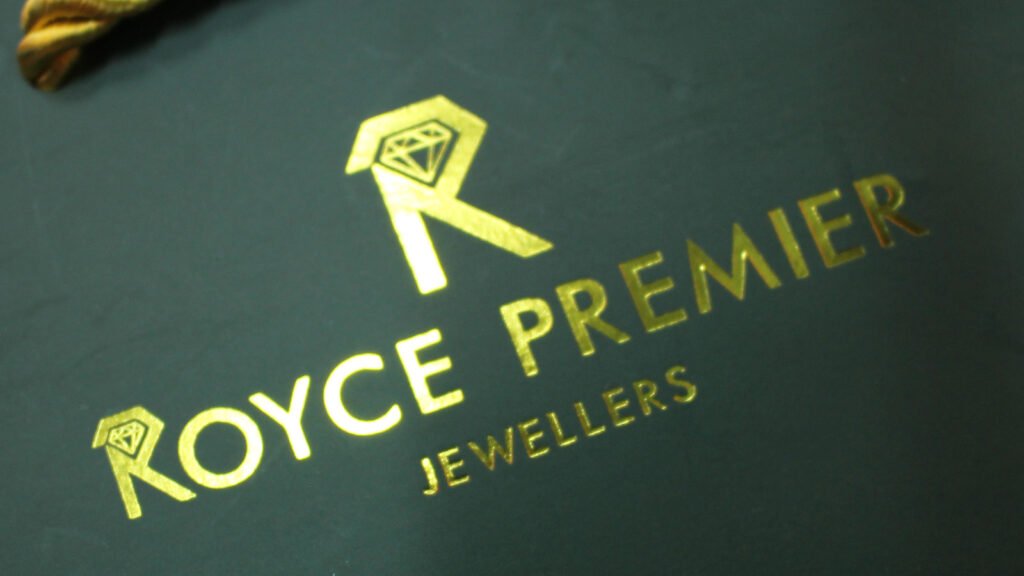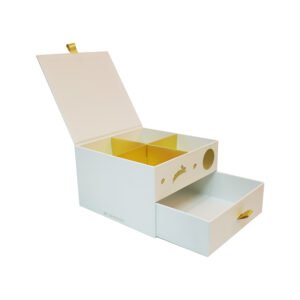
Hot foil stamping is a premium printing technique that involves applying metallic or pigmented foil to a surface using heat and pressure. This method is widely used to add a luxurious, high-quality finish to printed materials, creating a visually striking and tactile effect. Here is a detailed overview of hot foil stamping:
Benefits of Hot Foil Stamping
- Luxurious Appearance:
- Metallic Shine: The foil’s metallic sheen adds a high-end, luxurious look to printed materials, making them stand out.
- Variety of Finishes: Foils are available in various colors and finishes, including gold, silver, holographic, matte, and gloss, allowing for diverse design possibilities.
- Durability:
- Long-Lasting: The foil is durable and resistant to fading, ensuring the longevity of the printed material’s visual appeal.
- Scratch Resistance: The foil layer provides some protection against scratches and scuffs.
- Enhanced Perception:
- Professional Quality: The use of hot foil stamping conveys a sense of quality and professionalism, enhancing the perceived value of the product.
- Tactile Experience: The raised foil adds a tactile dimension, providing a pleasing touch that can engage recipients.
- Versatility:
- Wide Range of Applications: Suitable for various materials, including paper, cardstock, leather, and plastic, making it a versatile choice for many projects.
Applications of Hot Foil Stamping
- Business Cards: To create a memorable, high-impact first impression.
- Brochures and Flyers: Adding foil accents to highlight important information or design elements.
- Book Covers: Enhancing the aesthetic appeal of books, especially for special editions and high-end publications.
- Packaging: Used in luxury product packaging to attract customers and convey a premium quality.
- Labels and Tags: For product labeling that stands out on shelves.
- Invitations and Greeting Cards: To add a touch of elegance and sophistication to special occasions.
Process of Hot Foil Stamping
- Design Preparation: A design is created and transferred to a metal die or plate. This die is engraved with the desired pattern, text, or image.
- Foil Selection: Choose the appropriate foil type and color for the project.
- Heating: The metal die is heated to the required temperature.
- Stamping: The foil is placed between the die and the substrate (e.g., paper, cardstock). The heated die is pressed onto the foil, which transfers the design to the substrate through a combination of heat and pressure.
- Cooling and Inspection: The stamped material is allowed to cool, and the finished product is inspected for quality and consistency.
- Additional Finishing: The stamped material may undergo additional processes such as embossing, debossing, or lamination to enhance the final product.
Considerations for Hot Foil Stamping
- Cost: Hot foil stamping can be more expensive than other printing techniques due to the specialized materials and processes involved.
- Design Complexity: Detailed and intricate designs may require more precise dies and higher quality control, which can affect the overall cost and production time.
- Substrate Compatibility: Ensure the substrate material is suitable for hot foil stamping. Some materials may not respond well to heat and pressure.
- Environmental Impact: Consider using eco-friendly foils and substrates to reduce the environmental impact.
Hot foil stamping is an excellent choice for projects that require a high-quality, luxurious finish. It is particularly effective for business cards, brochures, book covers, packaging, and special event invitations, providing a unique combination of visual appeal and tactile experience that enhances the perceived value of the printed material.



